Yuliya, Anna and I continued our journey through Lithuania on 3 April. It was a sunny, spring-like day. We visited Jewish remembrance sites in Miroslavas, Veisiejai, Lazdijai, Simnas, Kalvarija, Marijampolė and Garliava. It was a day when we saw the efforts that have been made since Lithuania’s independence to preserve its Jewish heritage.


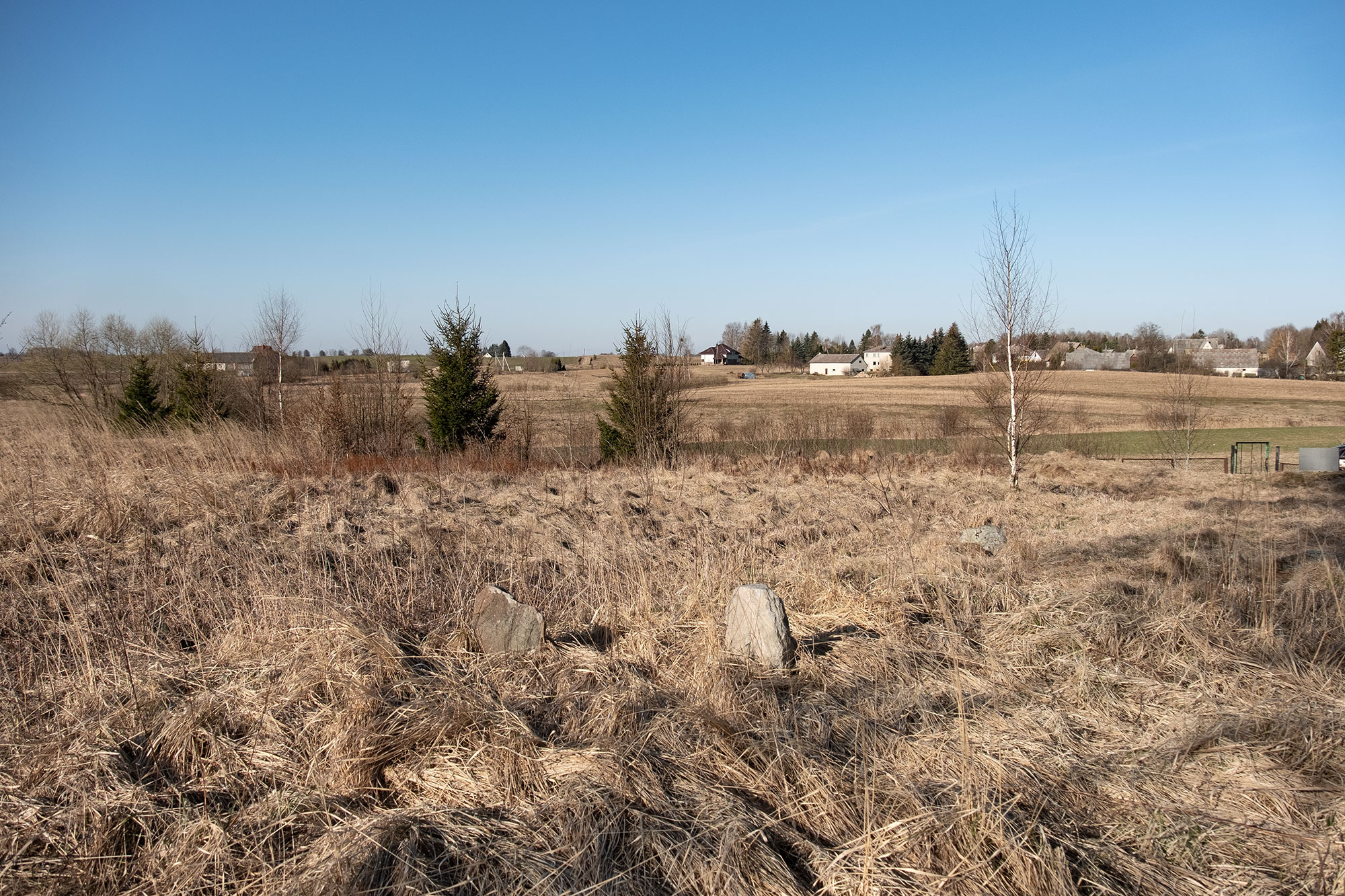
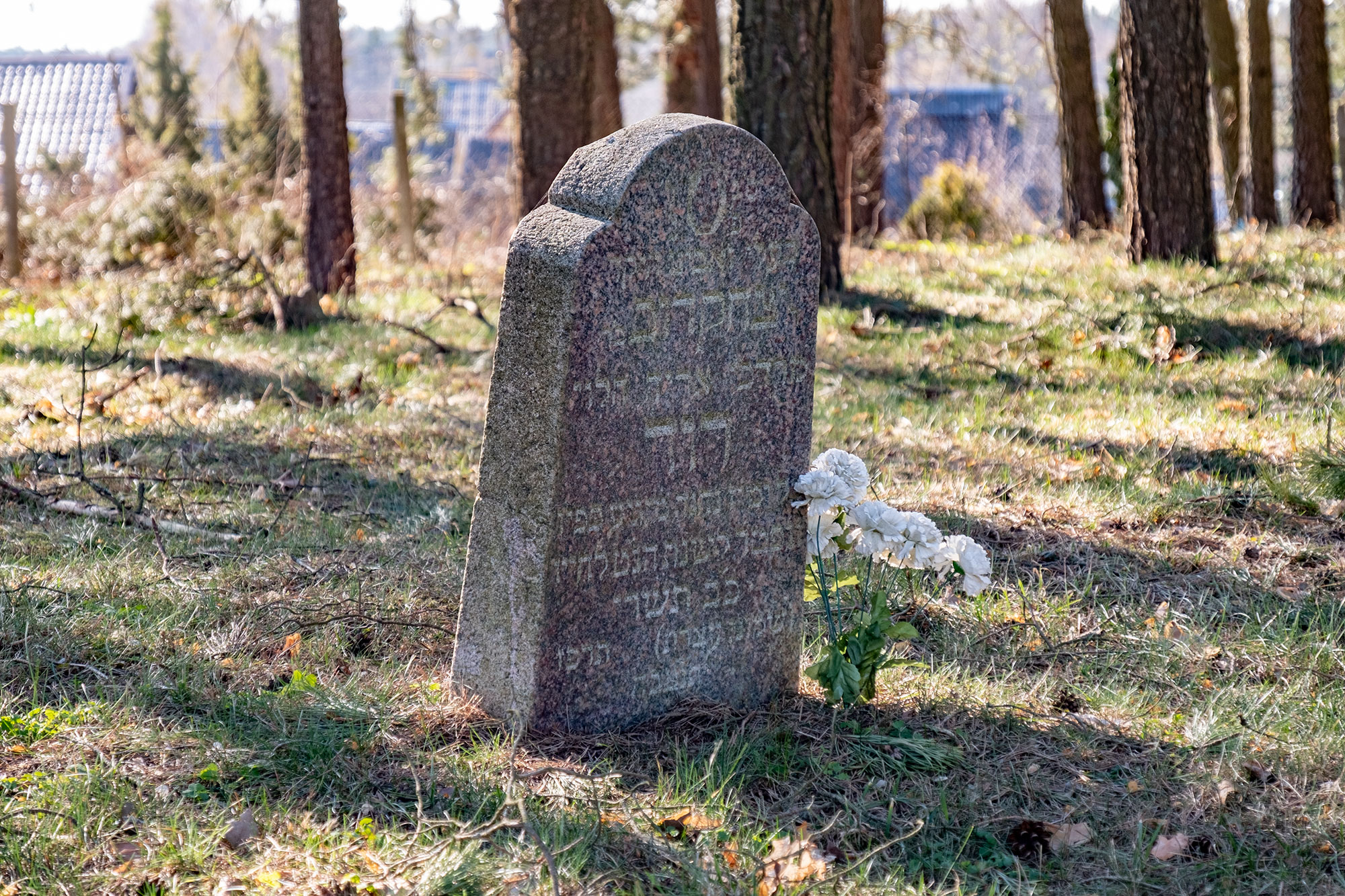
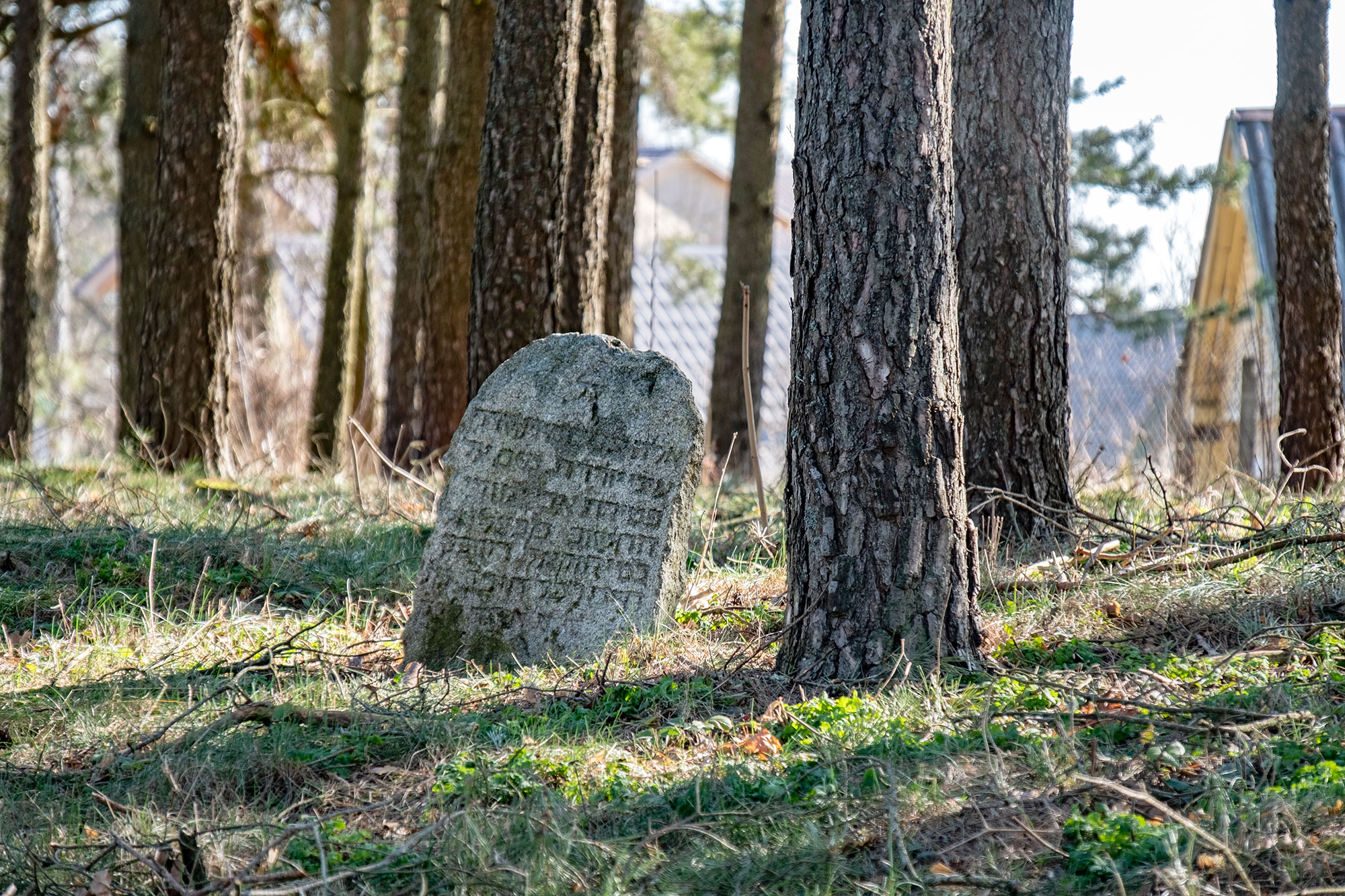
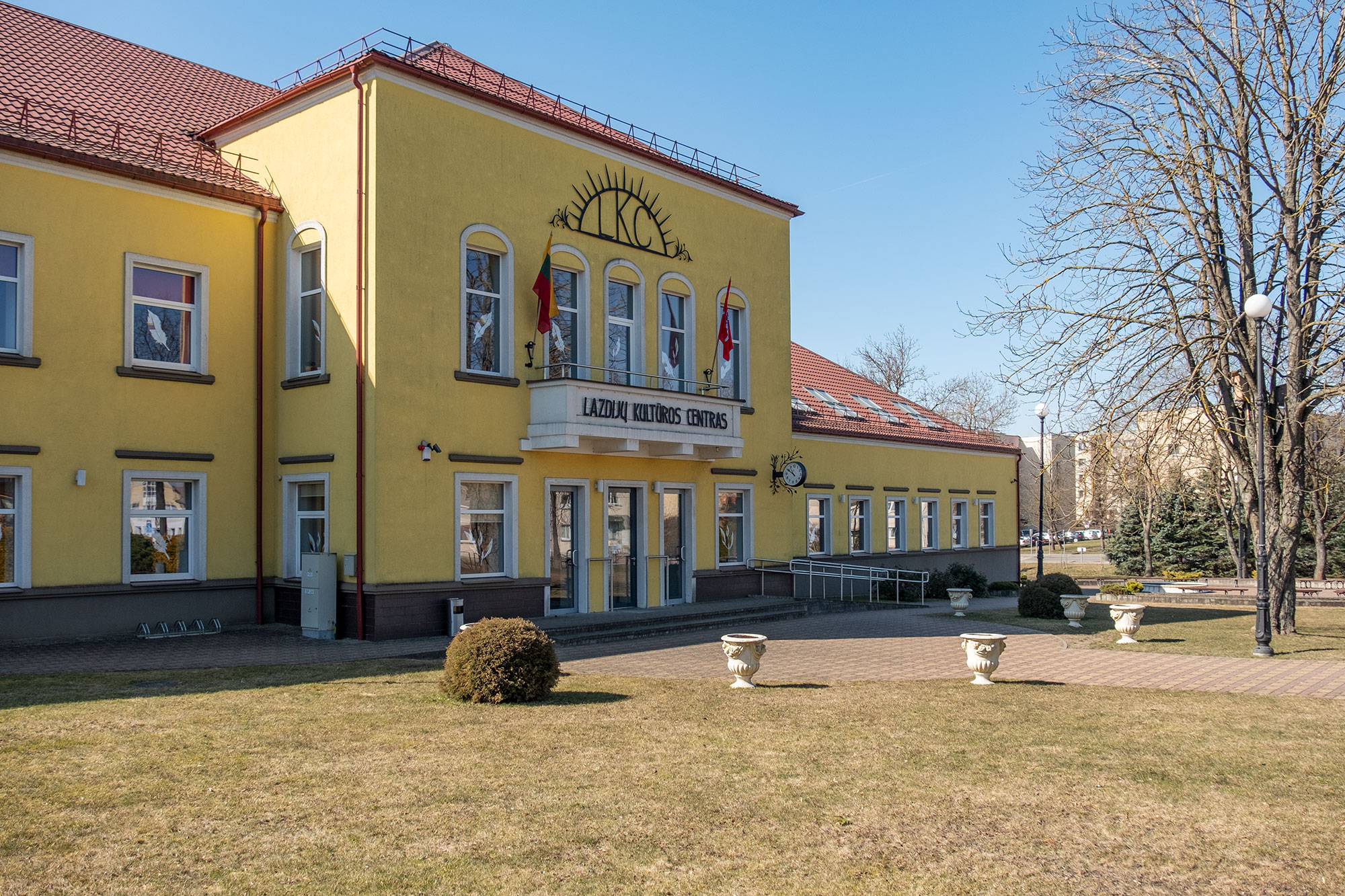
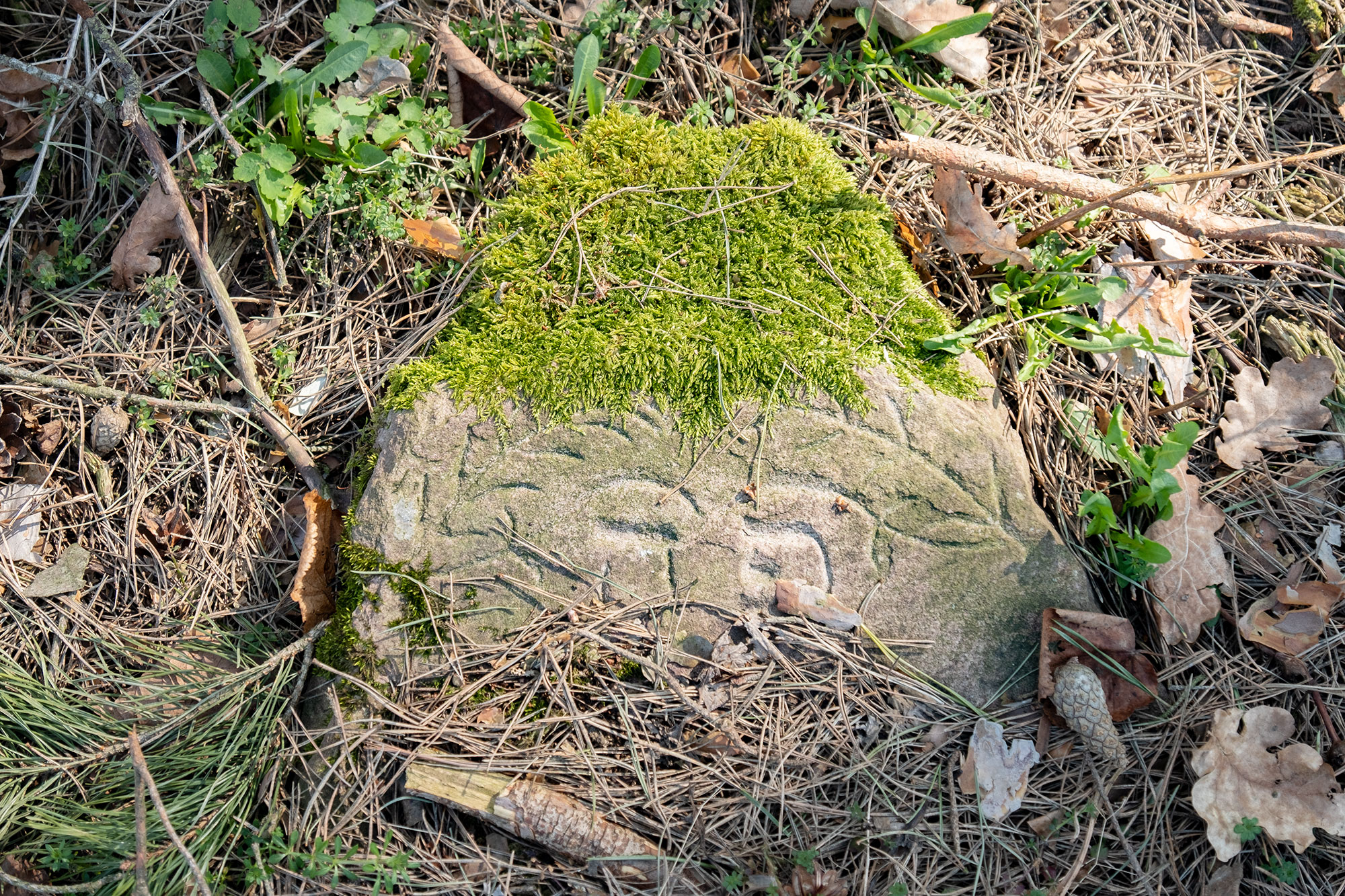
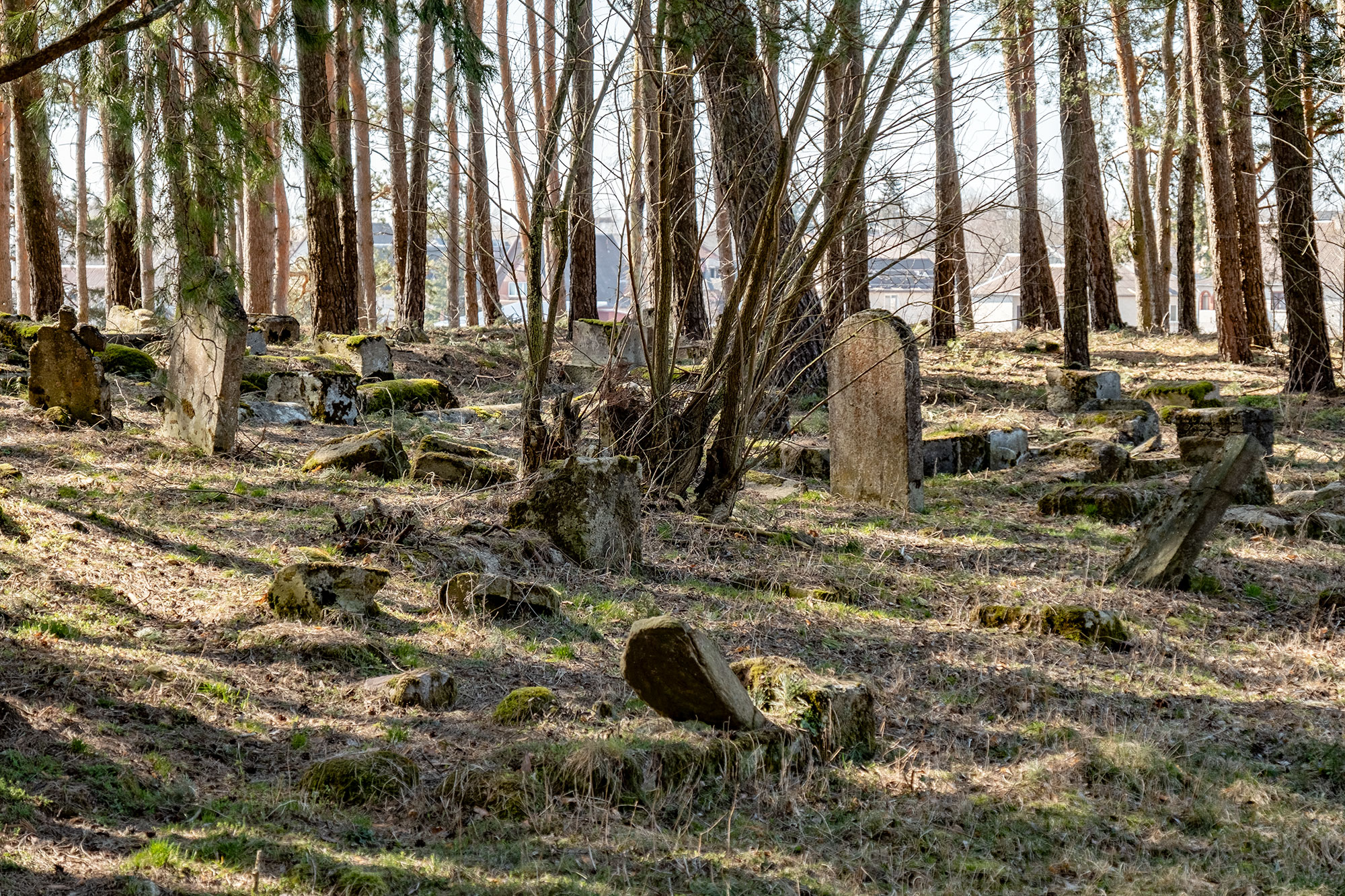
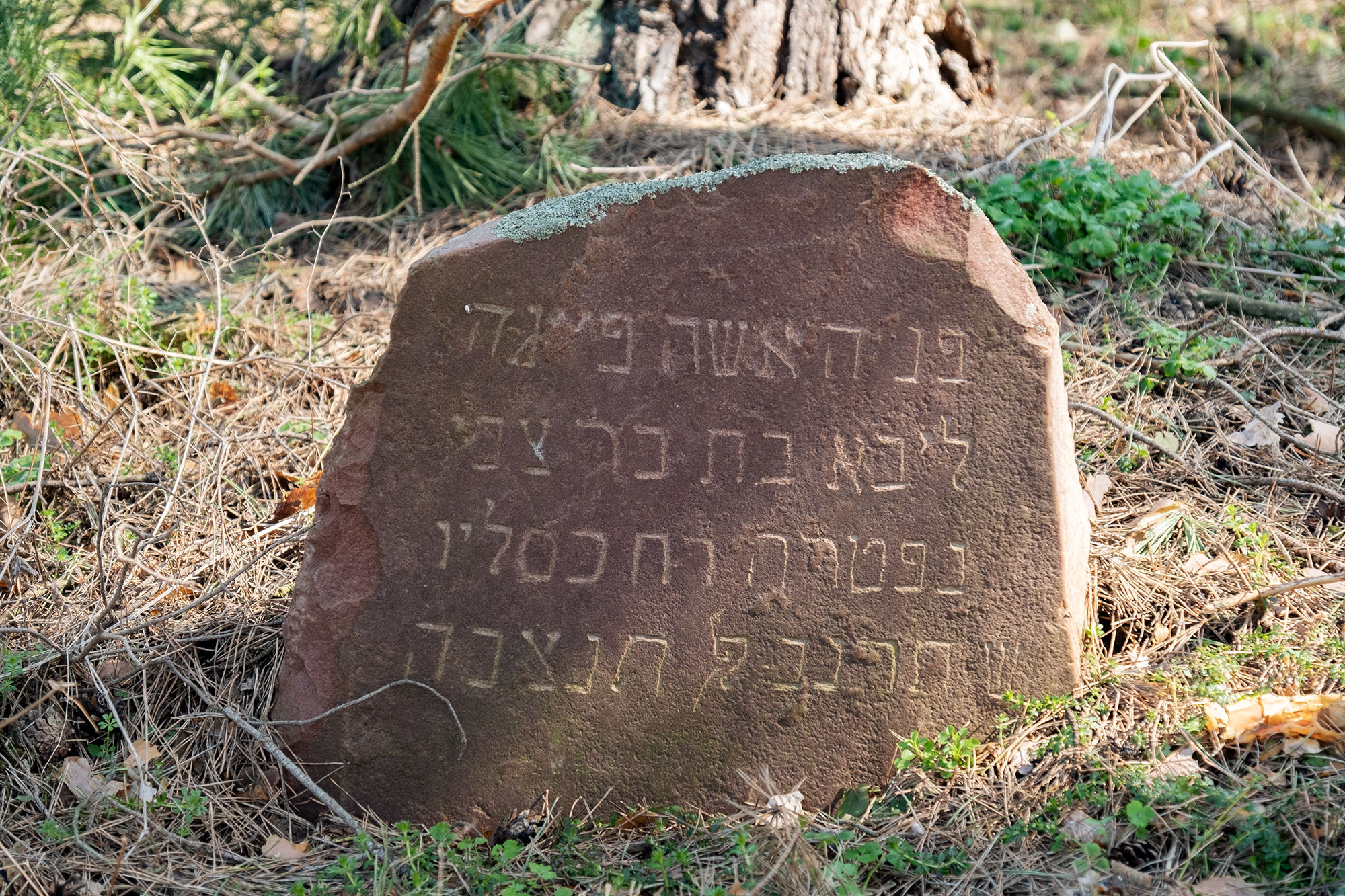
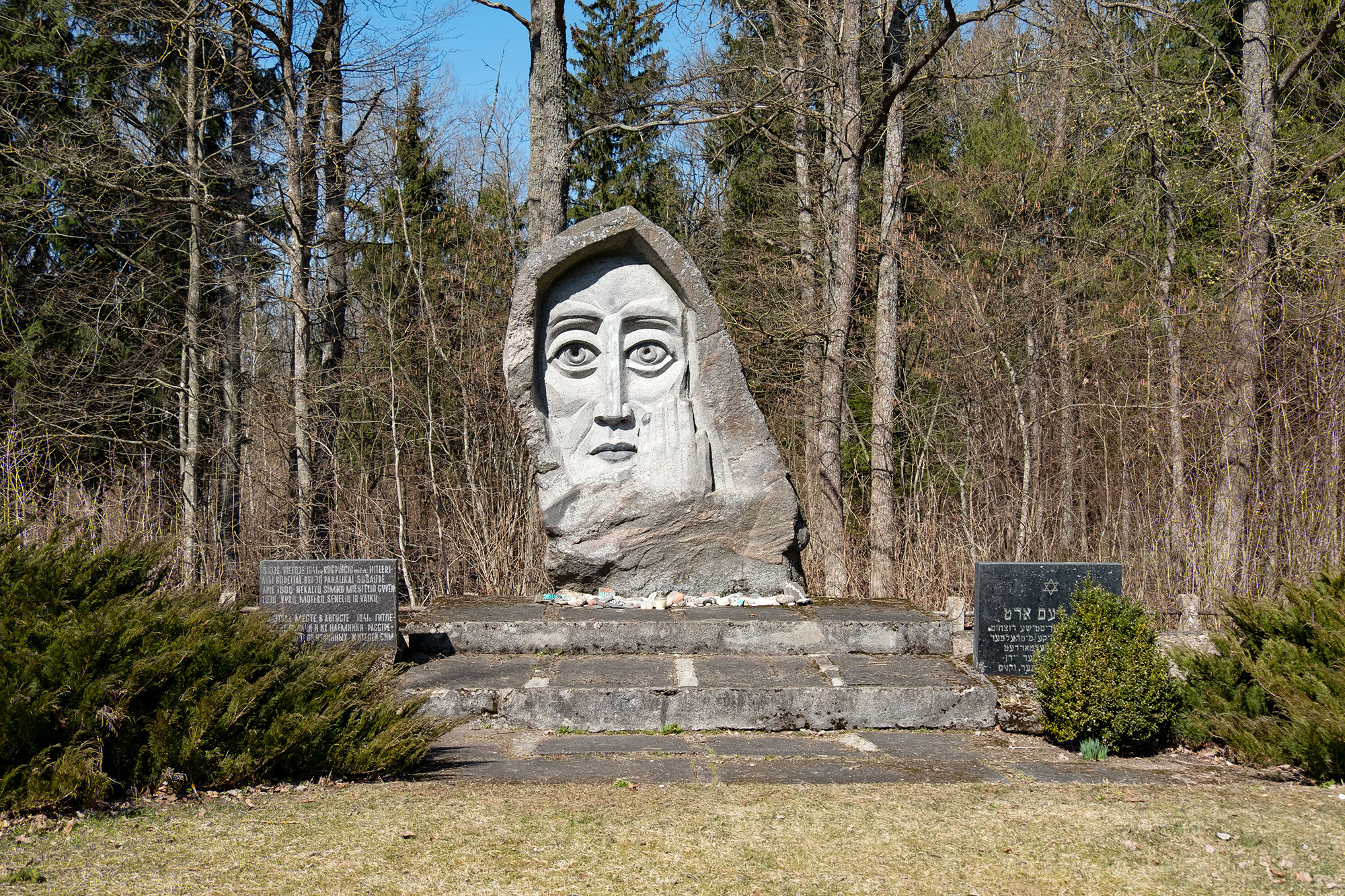
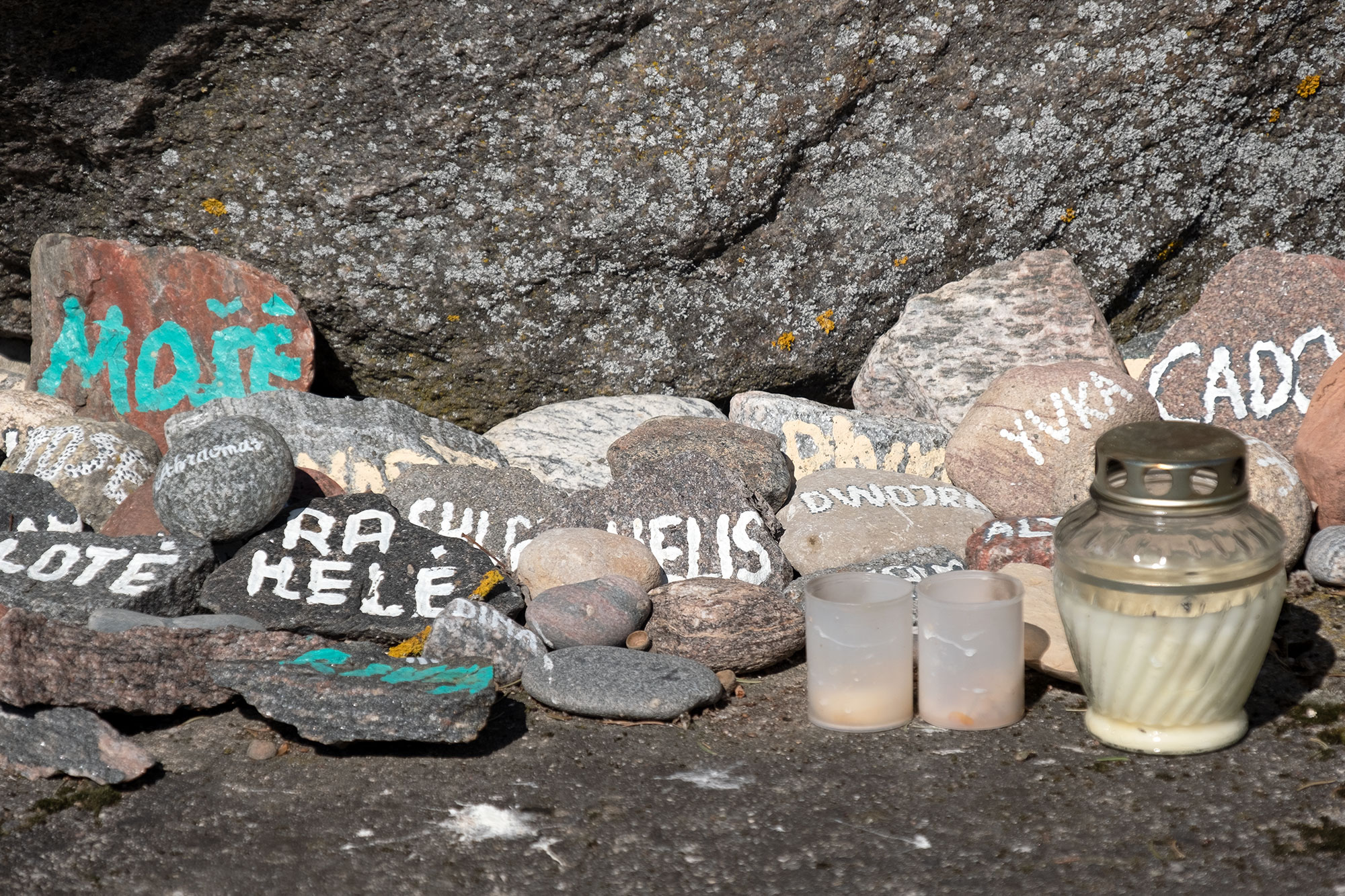

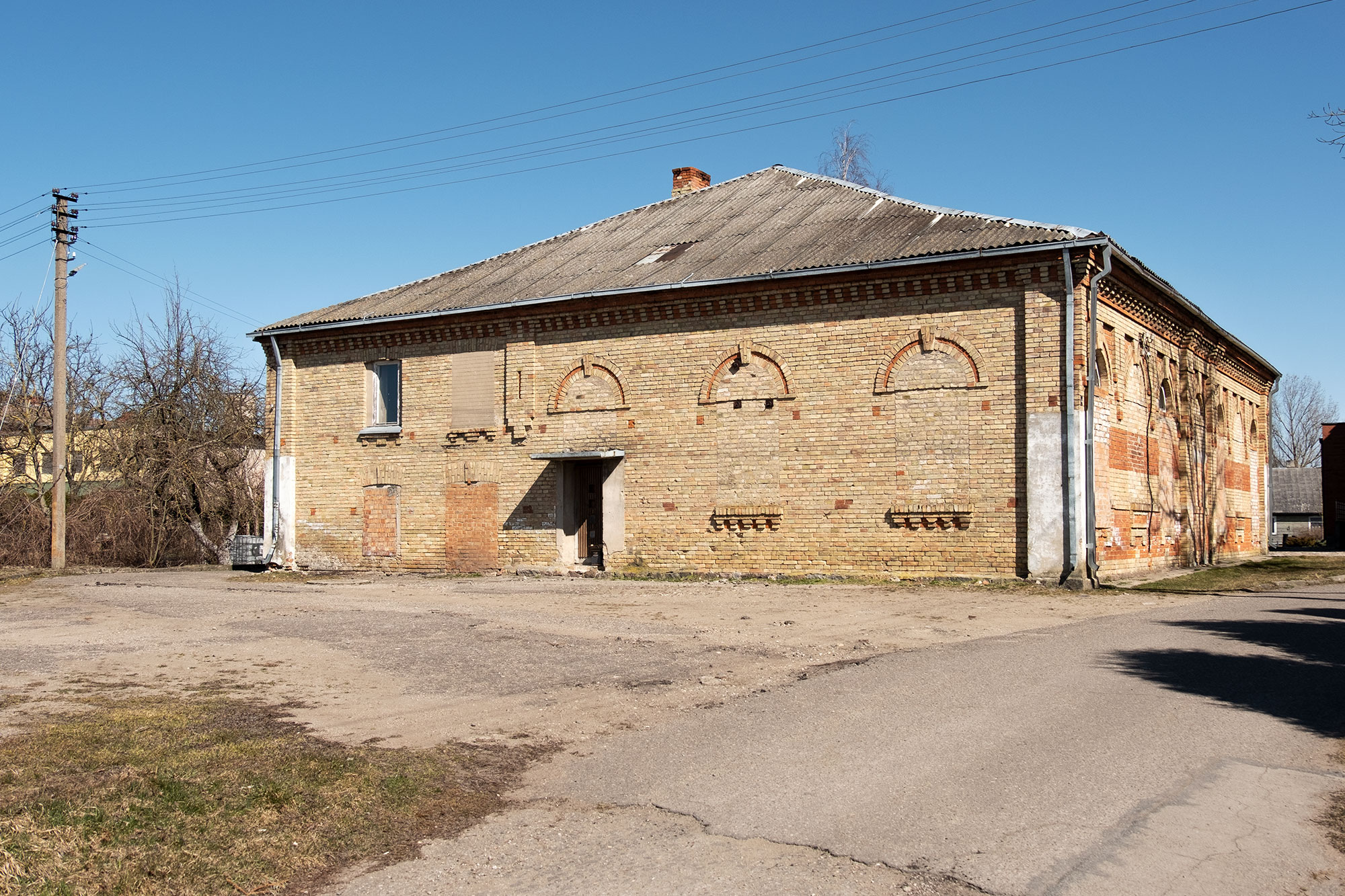

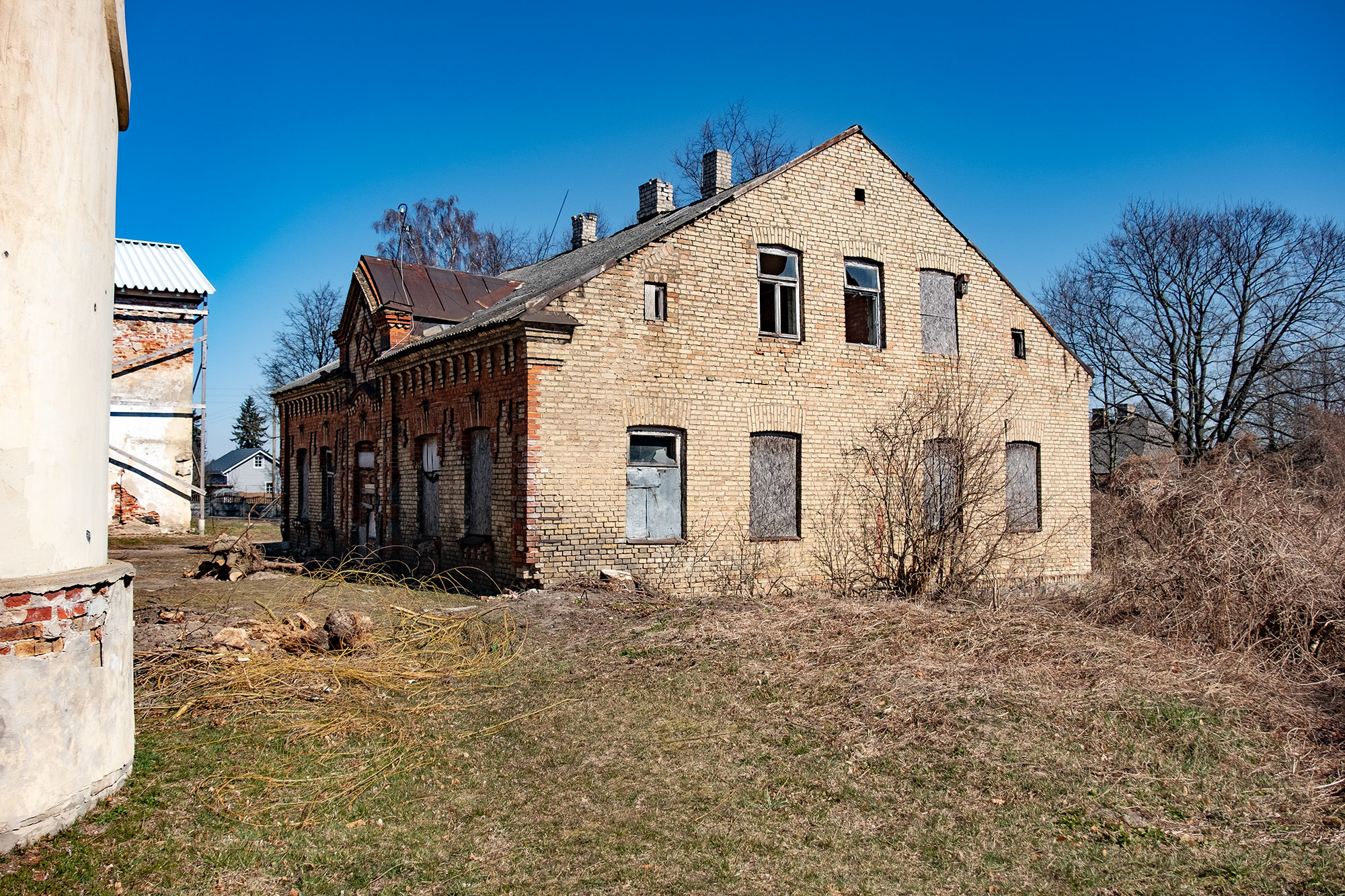
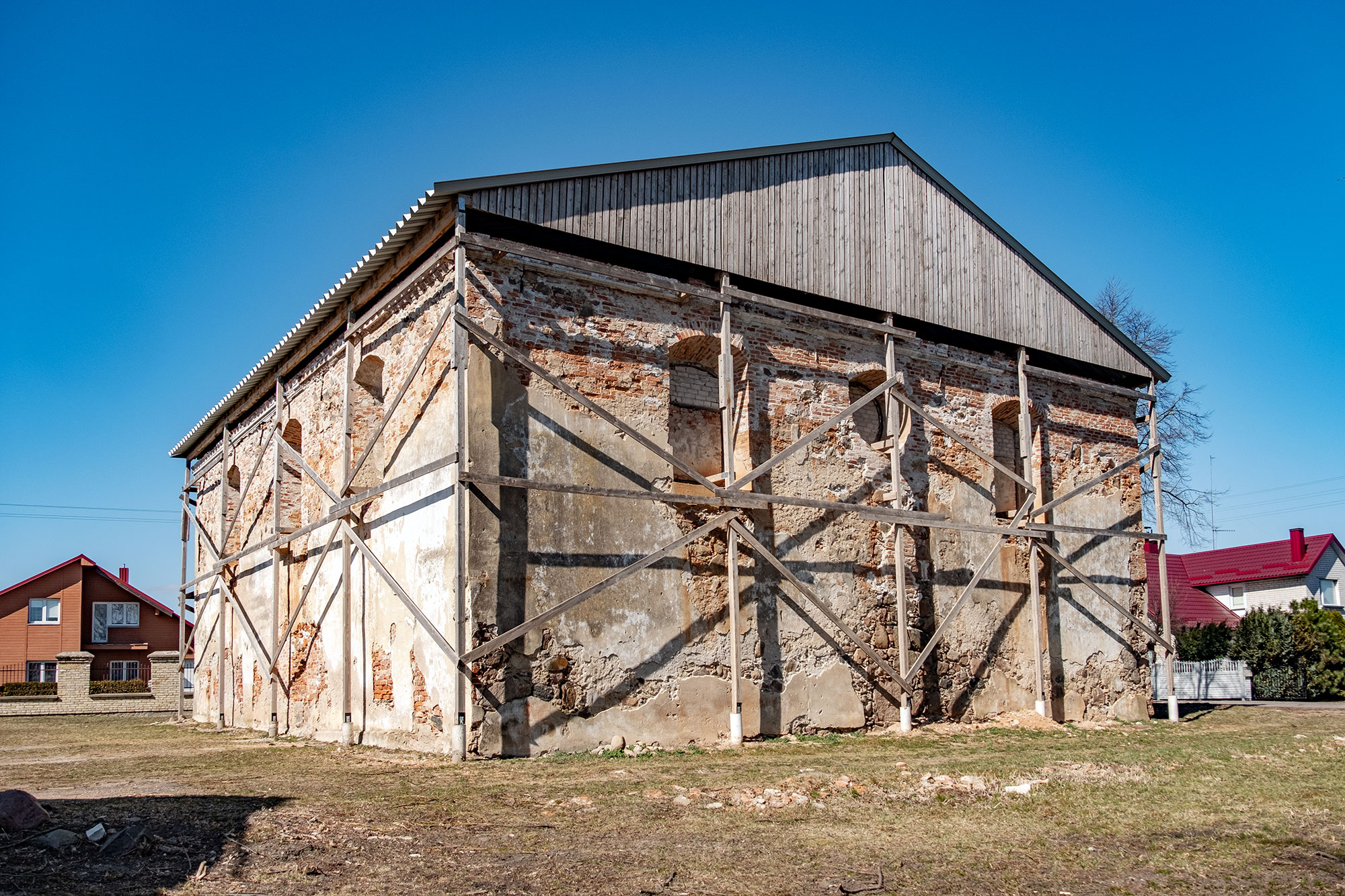
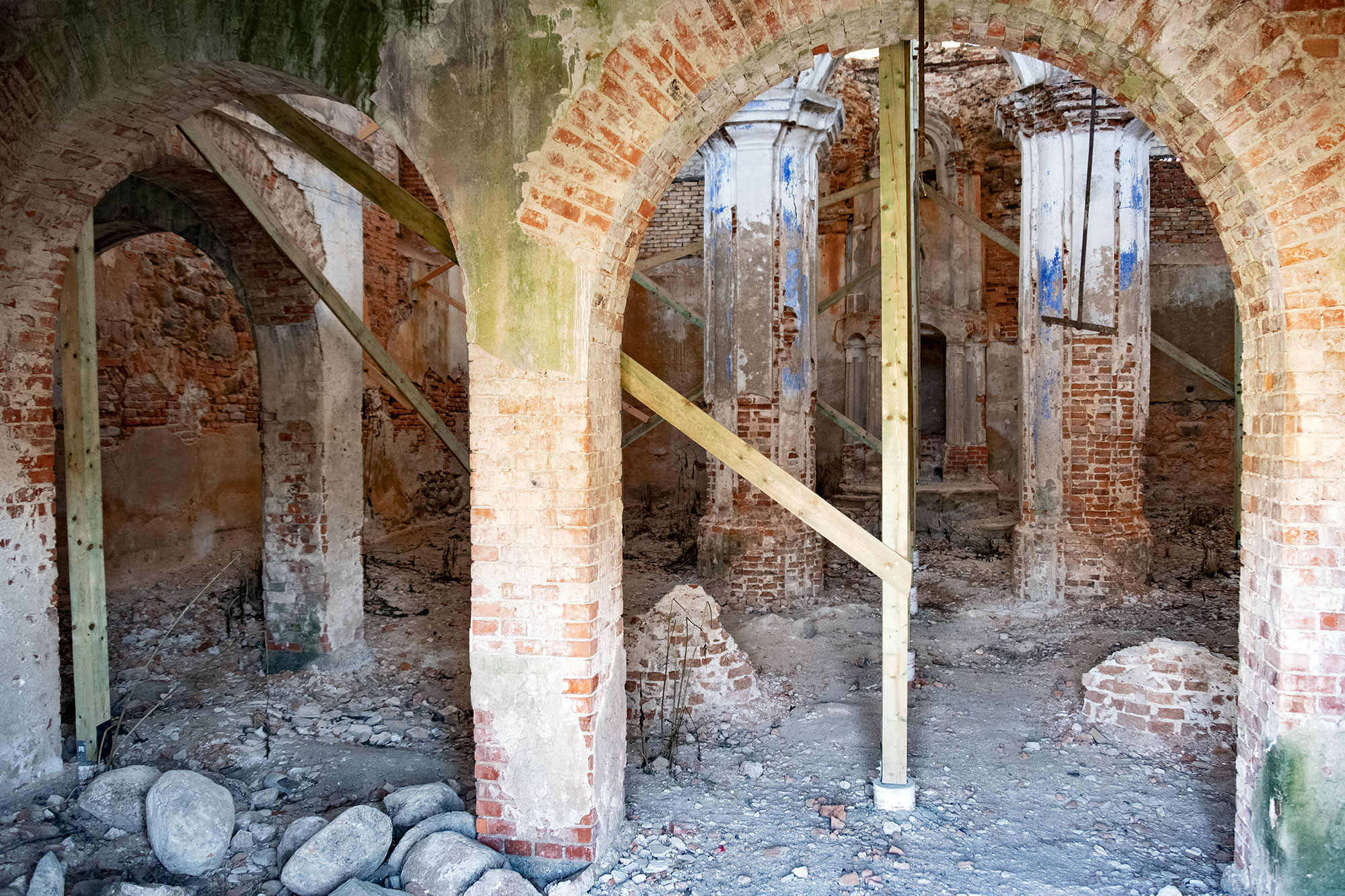
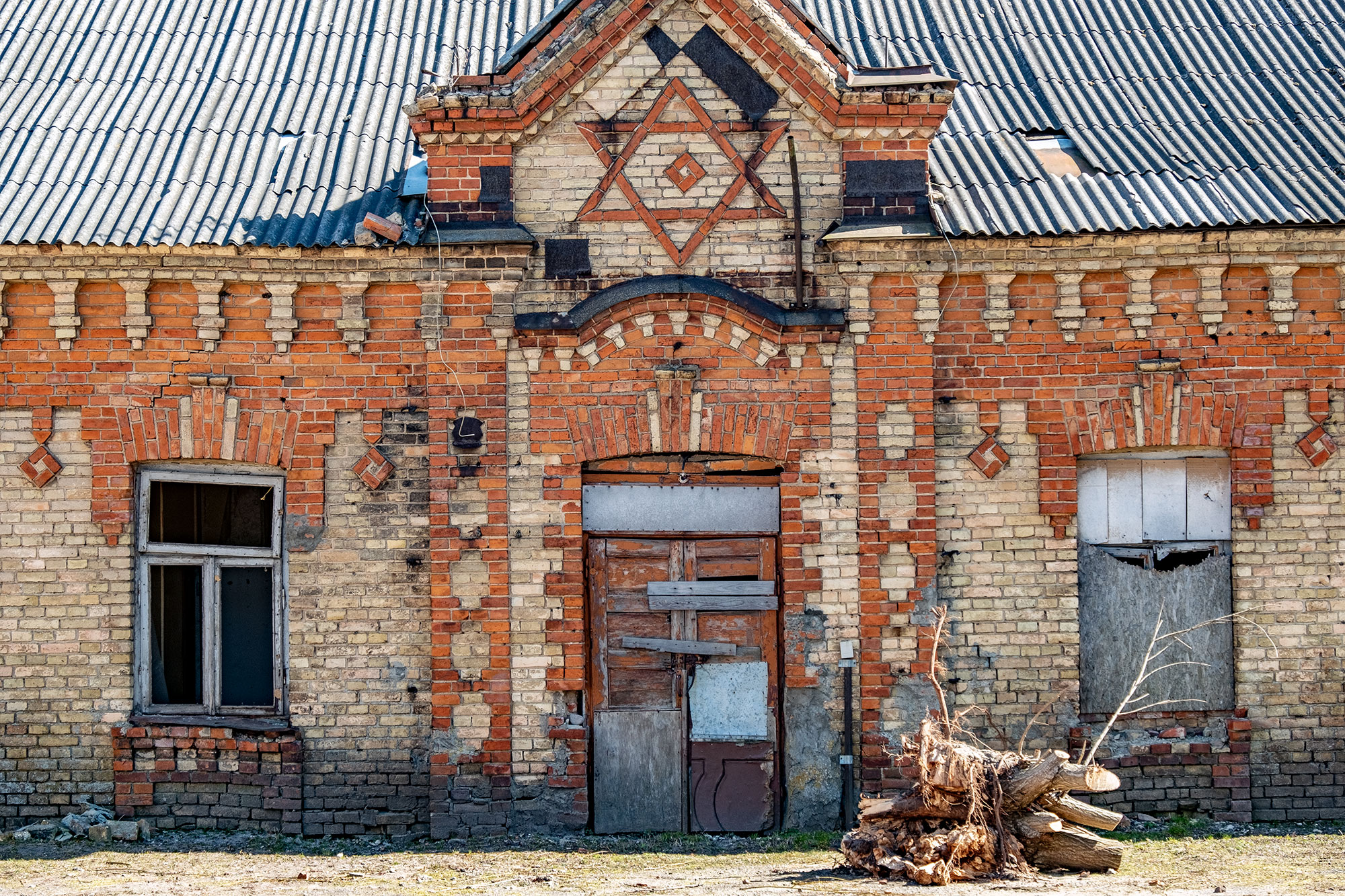
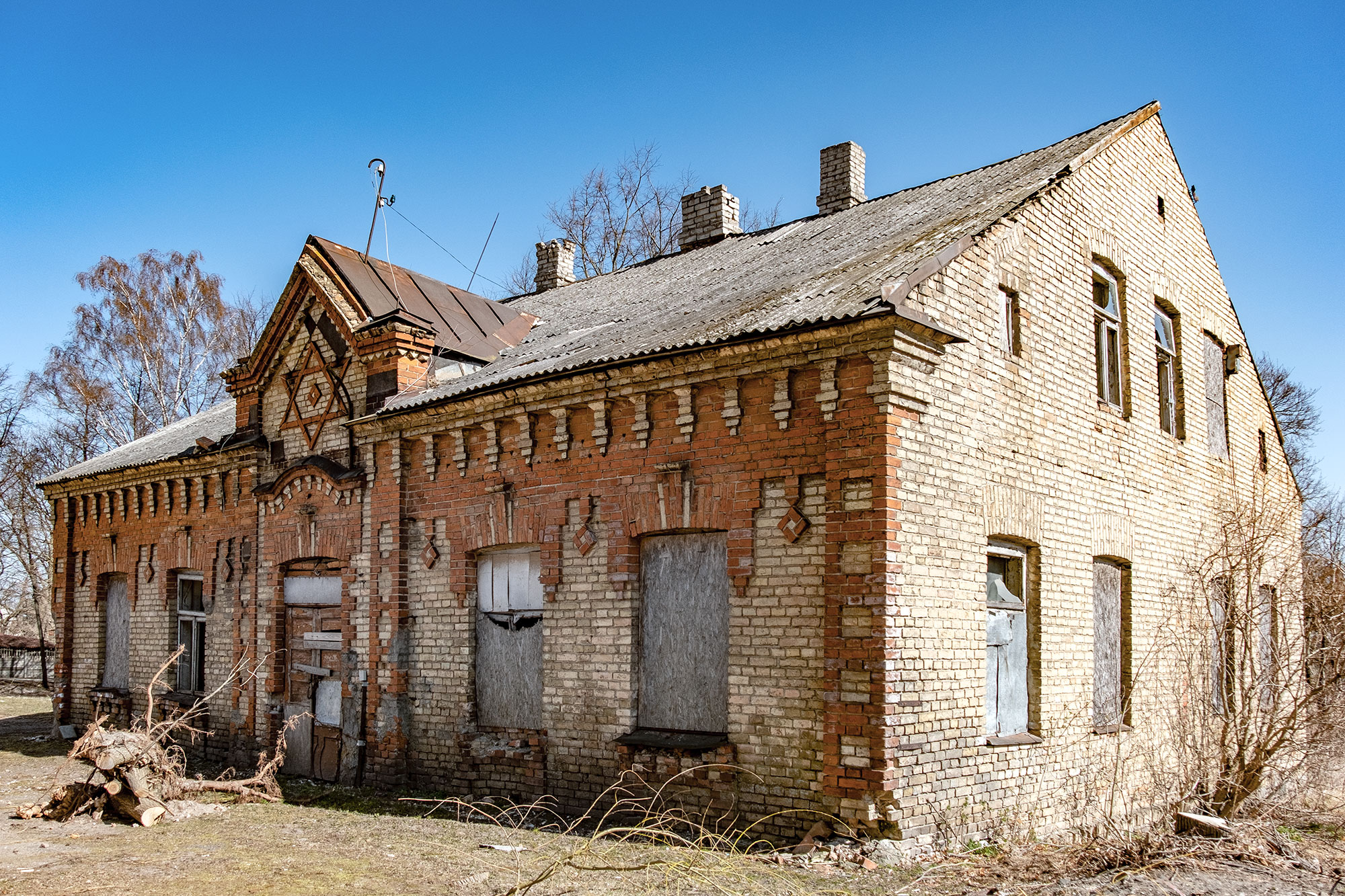
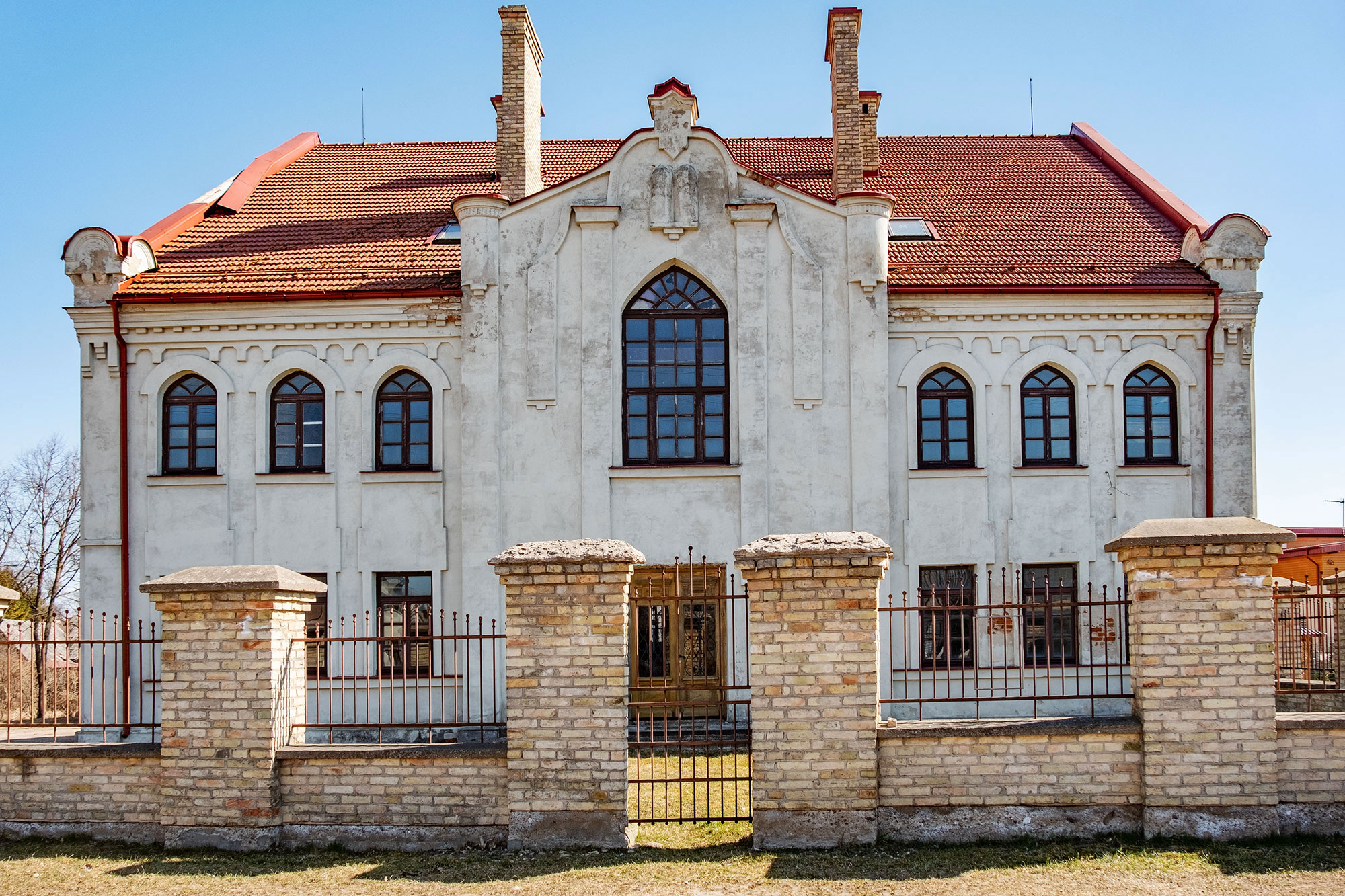


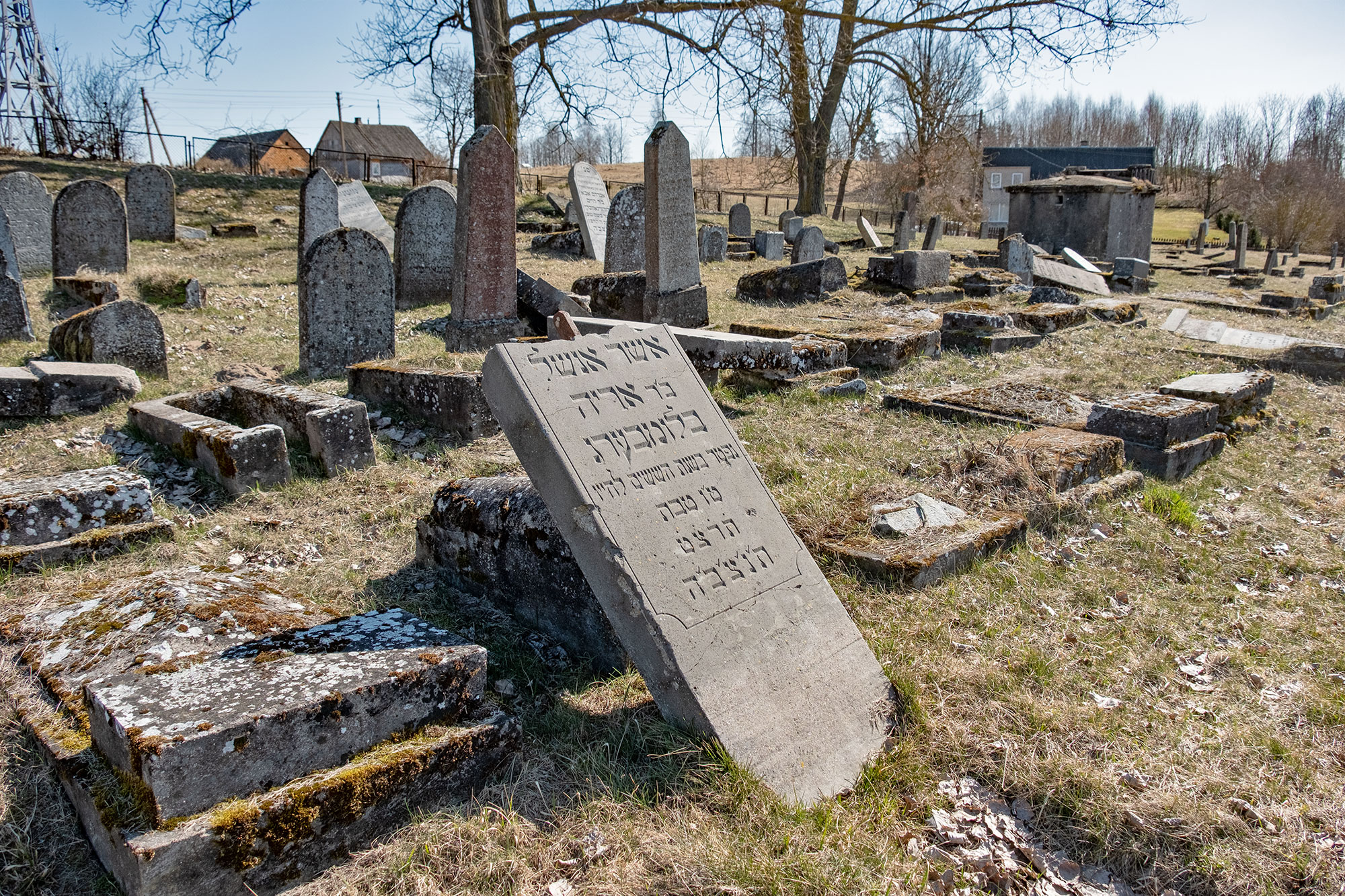
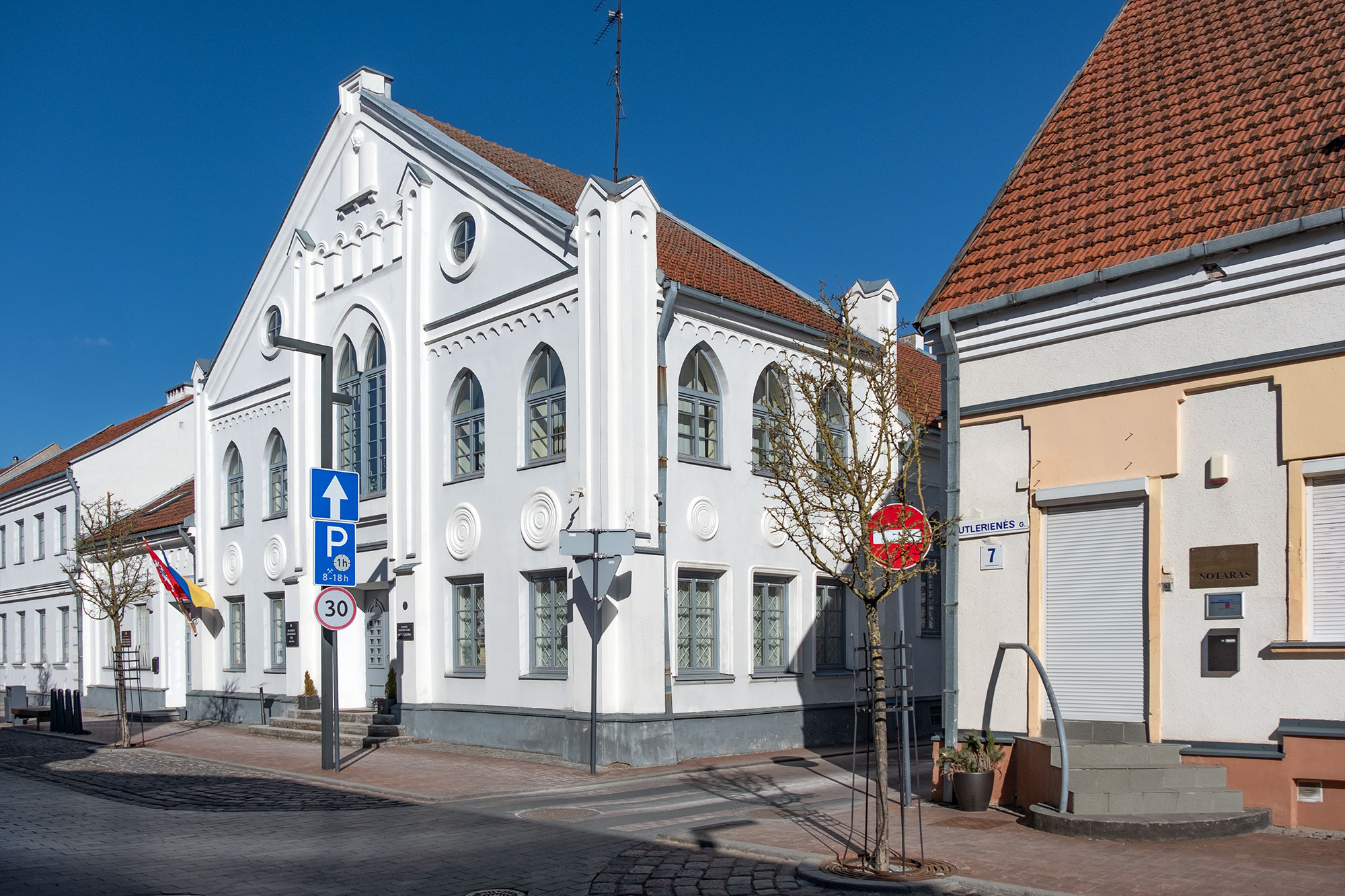
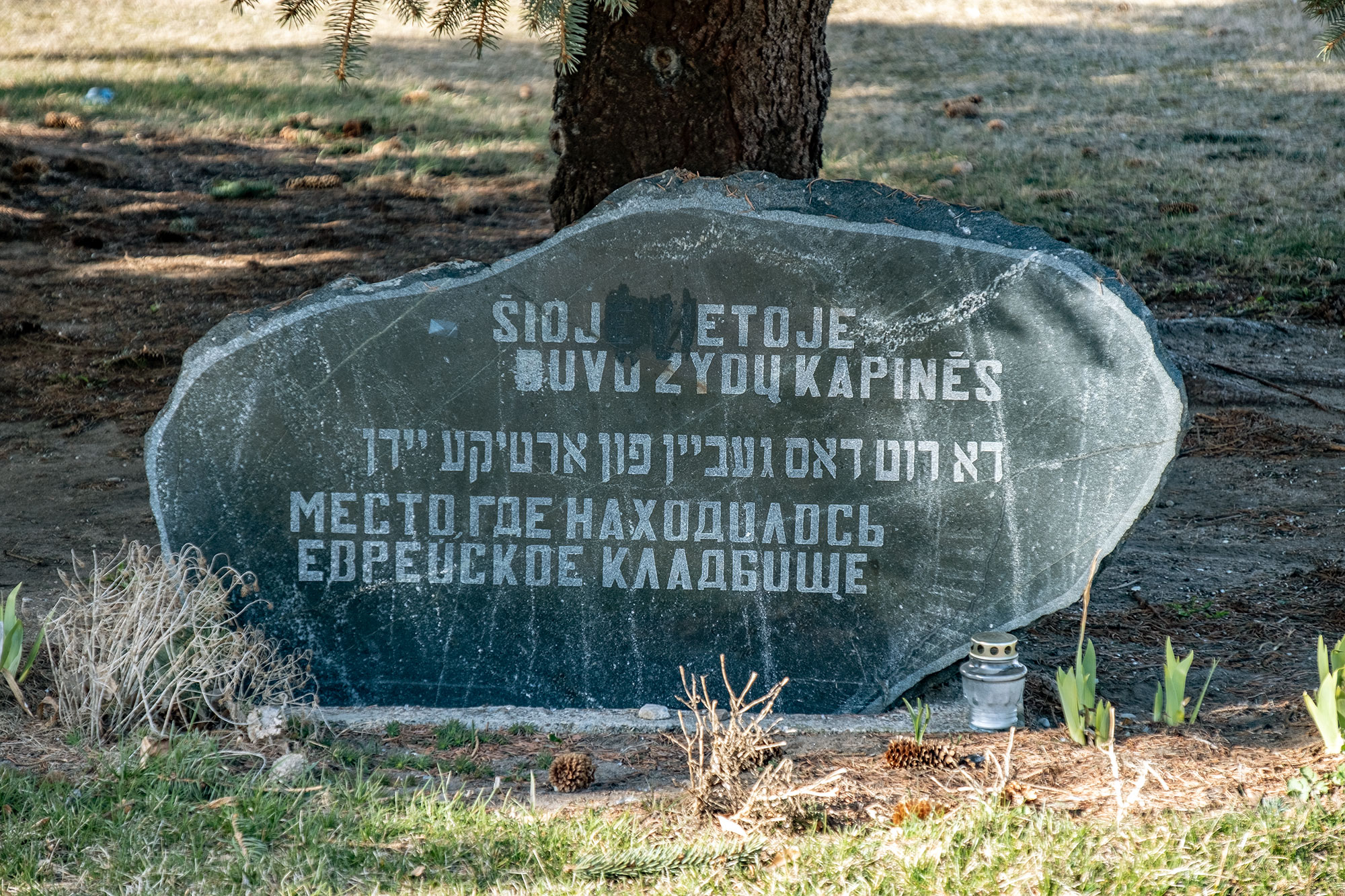
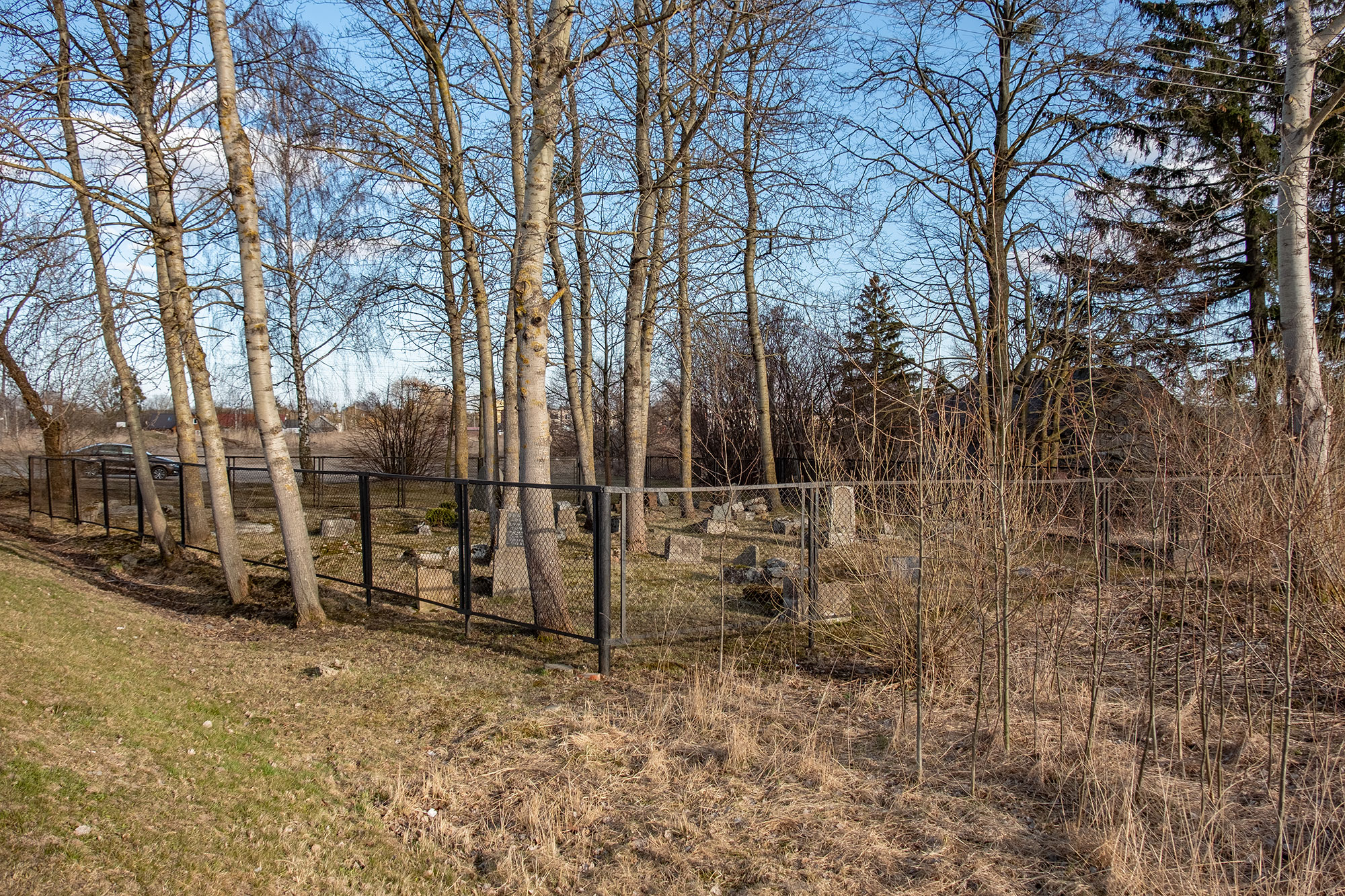
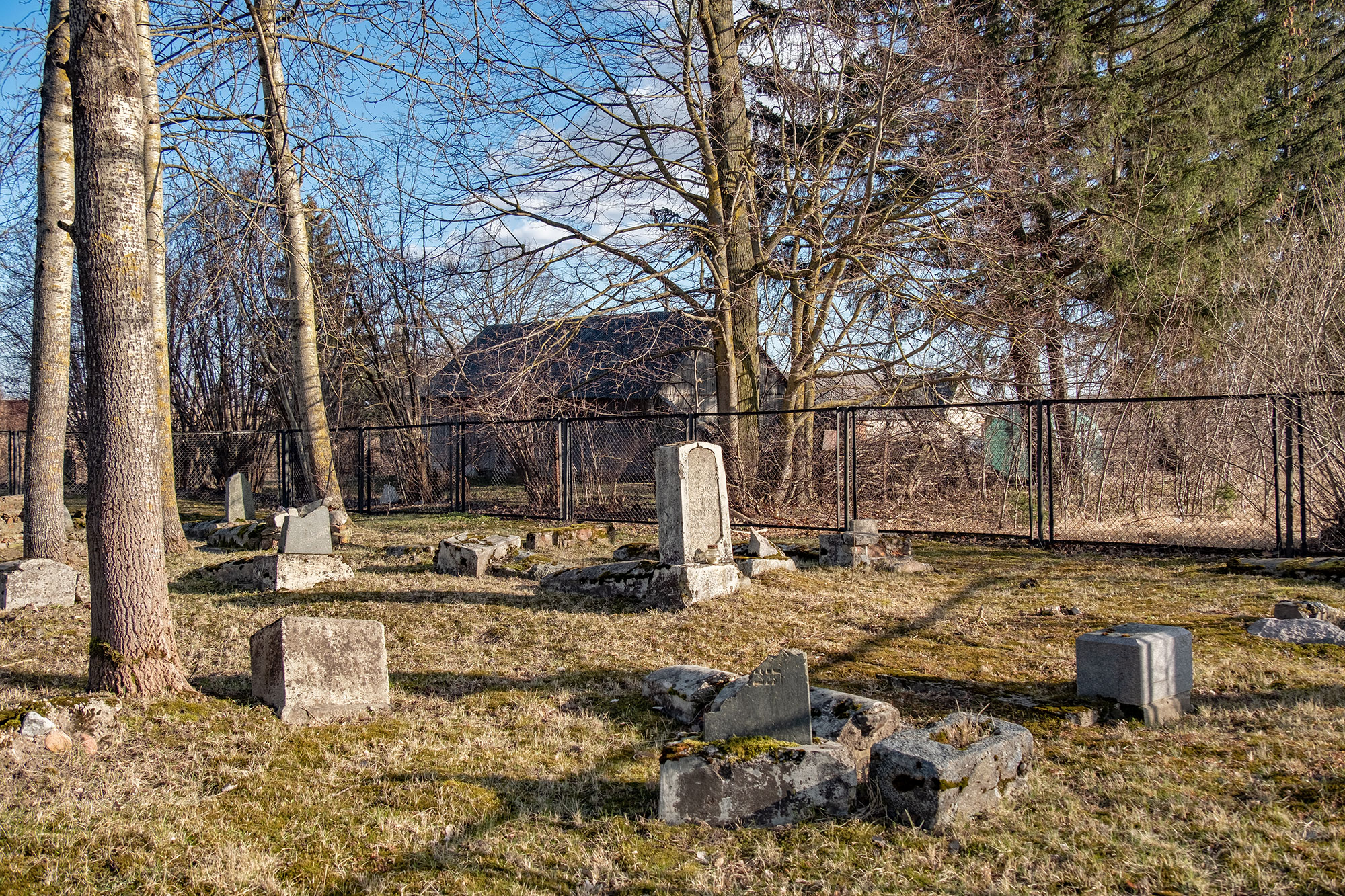
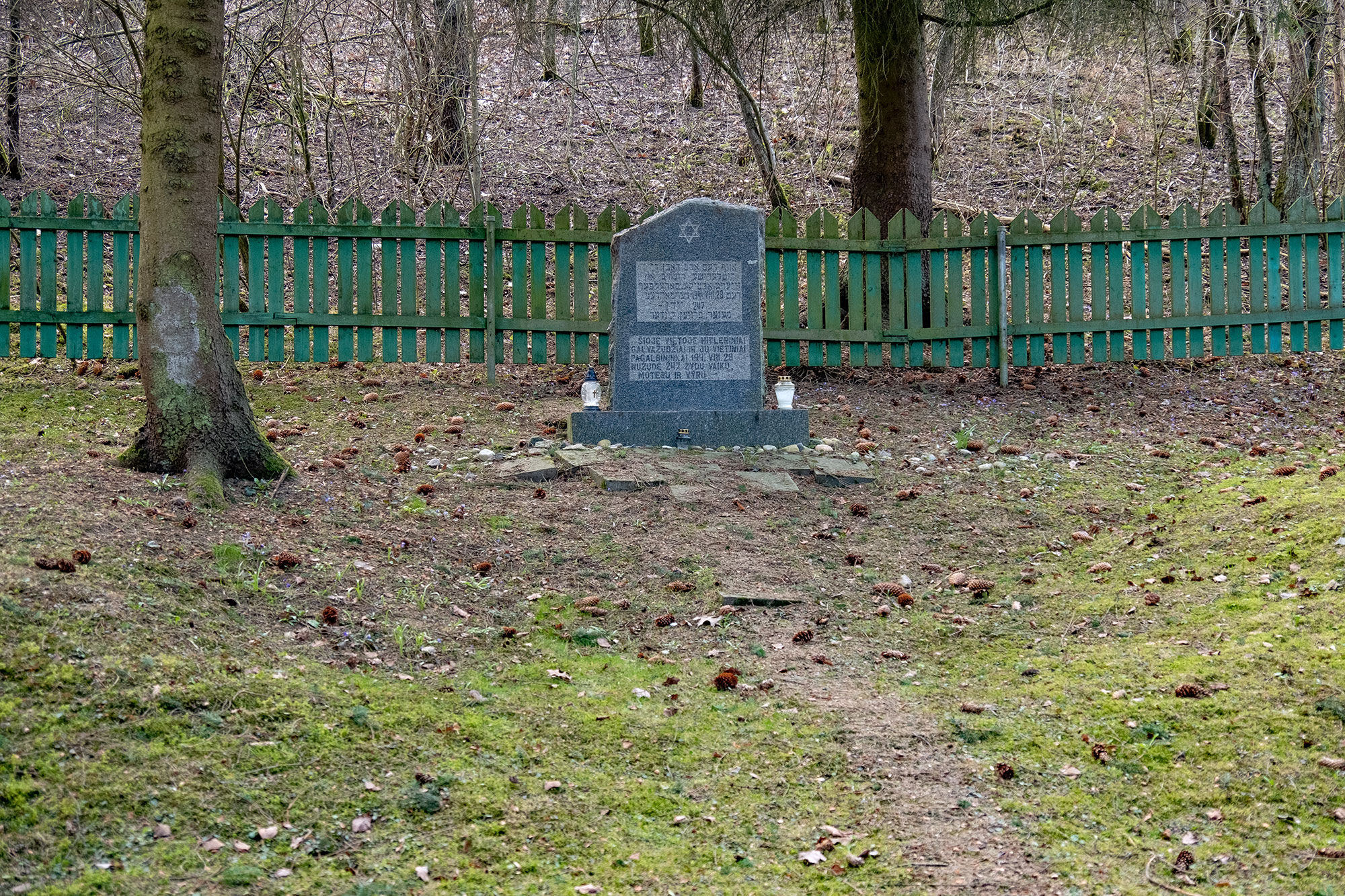
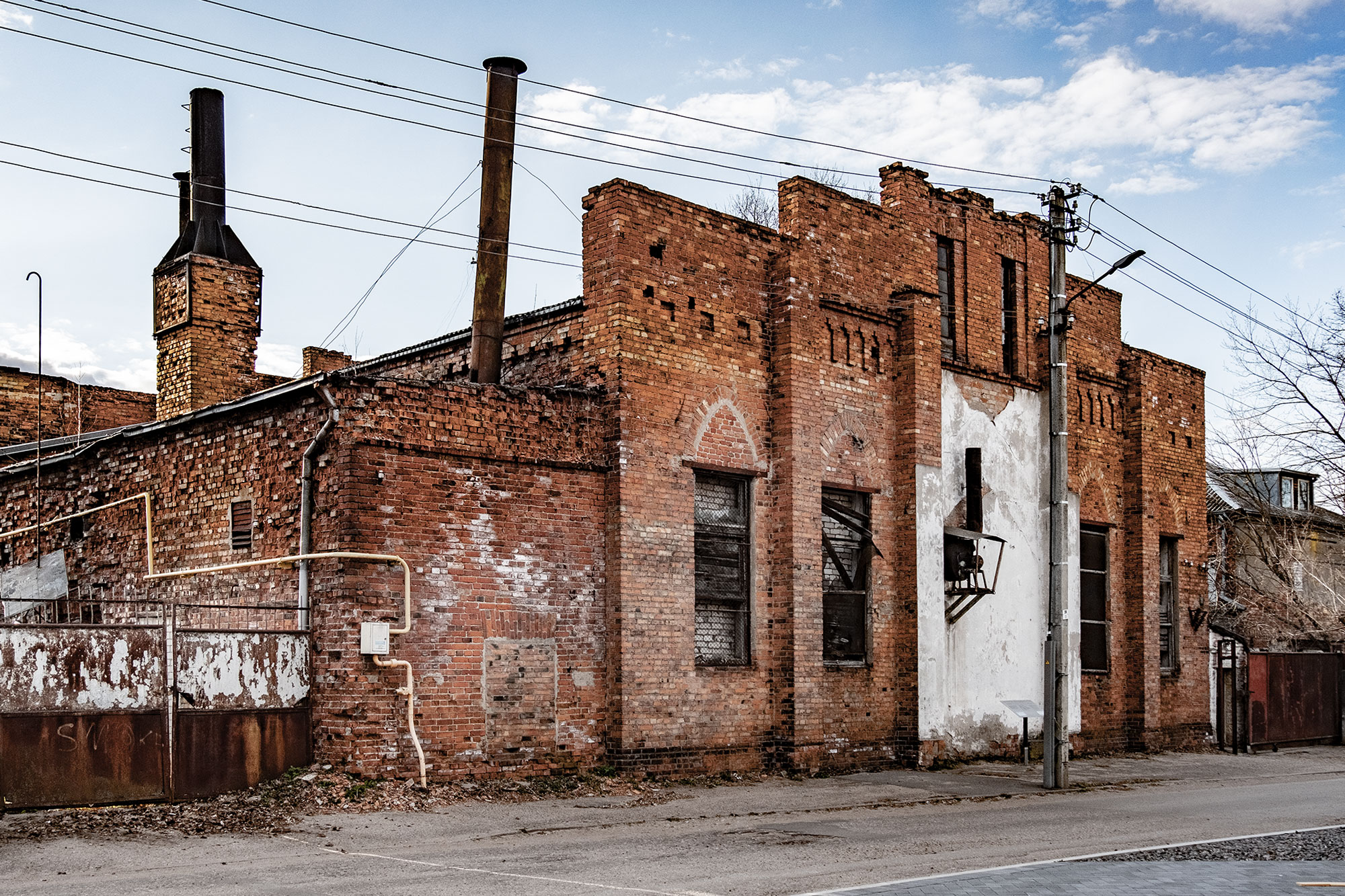
Not a single cloud was visible in the sky as we set off from Alytus in the morning towards Miroslavas. This would continue all day. The temperatures were still low and no green was yet visible on the trees, but the sun was warming and that was good.
Lithuania is famous for its wooden synagogues. We found a beautiful example of this in Veisiejai. Disappointing, on the other hand, is the synagogue and Beit Midrash in Lazdijai. The building was so altered after the war that its original purpose is no longer apparent.
During this and the last trip we saw many monuments from mass graves. Many of them were created after Lithuania’s independence. Perhaps the most peculiar is a huge, mourning woman’s head in the Simnas forest.
In Kalvarija we visited the impressive Shulhoyf. The Great Synagogue, a beit midrash and a Jewish school stand close together here. The beit midrash has already been restored. The work is almost complete. The Great Synagogue was a sad ruin, it has been rebuilt. There is still a lot to do there, but further decay has been stopped. Only the small Jewish school is still waiting to be restored.
The Hakhnasat Orḥim Synagogue in Marijampolė is a reconstruction of the building destroyed by the Soviets. It was restored after Lithuania’s independence. The importance of such reconstructions cannot be underestimated. They fill gaps in memory and integrate the Jewish heritage into the identity of the majority society.
One of the benefits of travelling in Lithuania is the many signposts to historical places and cultural sites. They line the country’s highways. It was only through them that we became aware of places we would otherwise have overlooked. One of these places was the small Jewish cemetery in Garliava, just outside Kaunas. The cemetery is actually so small that you can easily take a picture of the whole cemetery at a distance of a few metres. As soon as we left, a sign pointed us to a mass grave in the forest. The search was not easy, because the road was no longer passable after a certain point. Nevertheless, we found the grave.
I liked the New Šančiai Synagogue in Kaunas very much on our last trip in March – perhaps because it has not been restored and therefore the traces of history are particularly visible. Last time, we visited and photographed it at noon. The sunlight was not particularly favourable then and I thought I might be able to photograph it better in the afternoon. I was wrong – the light was even worse.

This work is licensed under a Creative Commons Attribution-NonCommercial-NoDerivatives 4.0 International License.
MY LATE MOTHER CAME FROM LINKUVA WHEN SHE CAME TO SOUTH AFRICA, SHE LEFT HER FATHER AND A SISTER BEHIND. JUST AFTER THAT, THE NAZIS AND THE TOWNSFOLK RAIDED THE SHUL ONE FRIDAY NIGHT, AND ROUNDED UP THE COMPLETE CONGREGATION AND MARCHES THEM INTO THE FOREST AND BURIED ALIVE IN A PREDUG PIT. ONE LADY WAS LET GO, BECAUSE SHE WAS NOT JEWISH. THAT IS HOWV WE KNOW WHAT HAPPENED. SHE SAID THAT THE GROUND WRITHED FOR 3 DAYS. THE NAMES OF MY MATRENAL GRAND FATHER AND LATE AUNT, WHO WAS A DEAF MUTE, WERE YA AKOV AND ESTHER KLACITE. I AM NOW, 82 YEARS YOUNG AND CARRY THIS WITH ME ALL MY LIFE.